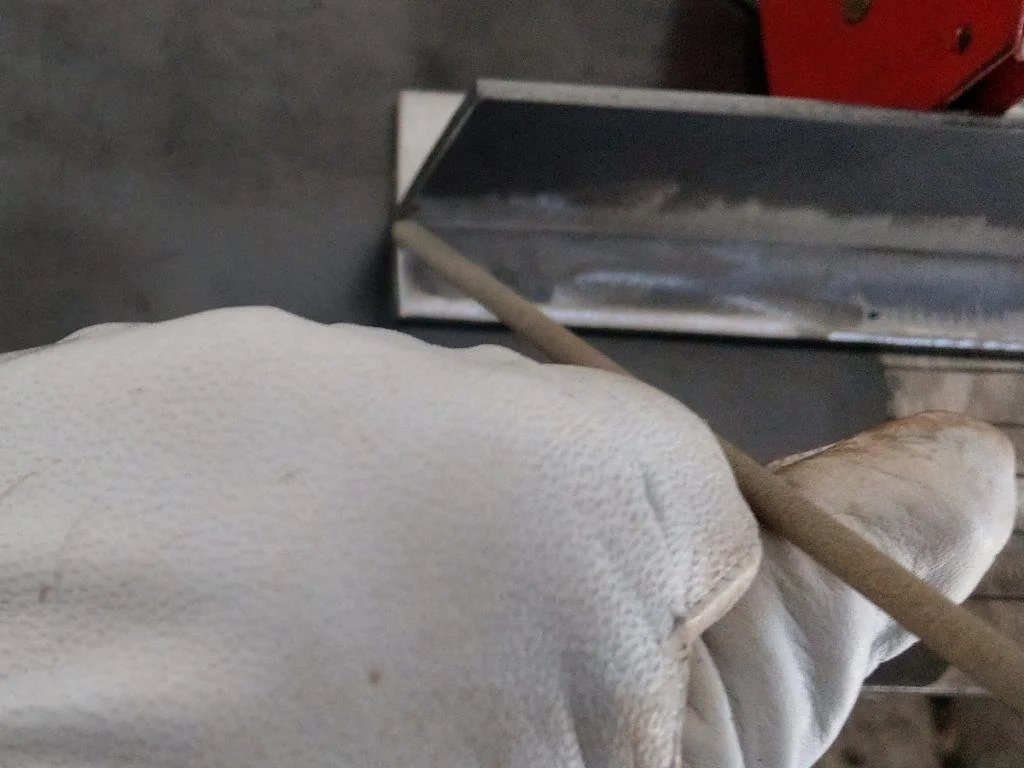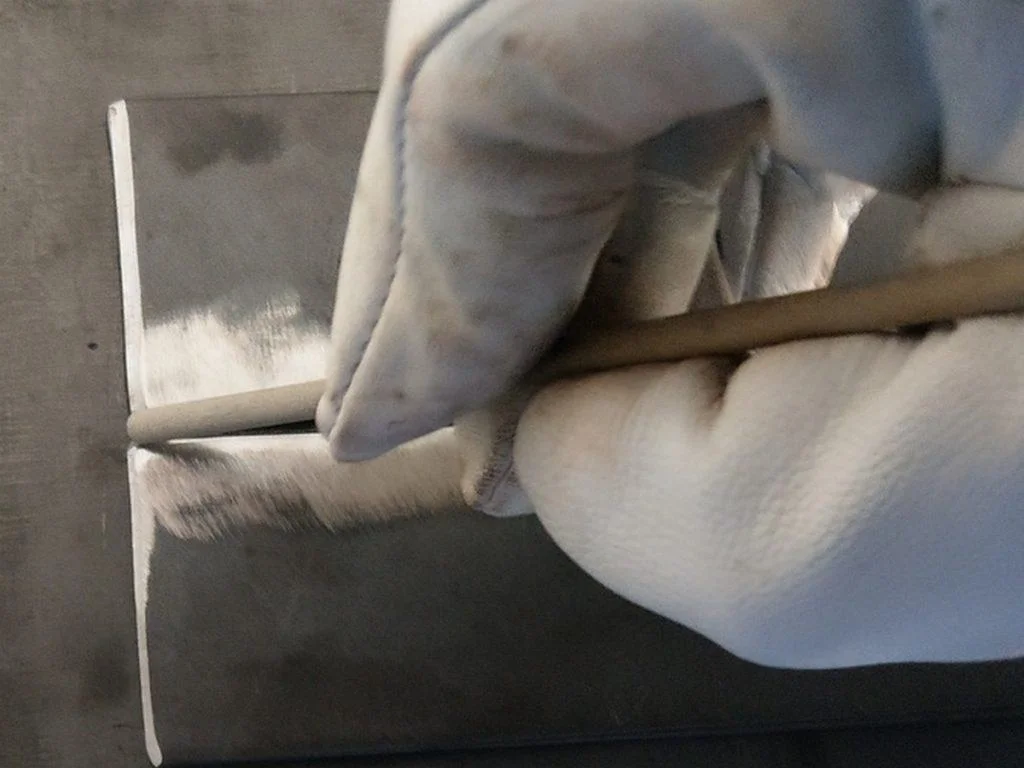Can You Hold the Electrode While Stick Welding? When and How To
It might have crossed your mind if it is ok to hold a stick welding electrode when you weld. Or you might have seen others do it. But when is it helpful, and how safe is it?
You can hold the electrode when stick welding (SMAW) for a short time to improve the electrode’s stability when striking the arc or making tack welds. When doing so, you must wear dry welding gloves in good condition.
If you think holding the rod can help you, let’s see when and how you can do it in more detail. Also, what are the dangers of doing that?
When is it helpful to hold the welding rod?
The most helpful case for holding the rod is to get an easier arc strike and start welding.
Before you start welding, the rod is cold. This makes striking the ark harder and increases the chances of sticking the rod to the workpiece. If you try to restart a hot rod, the arc starts easier.
If you don’t manage to strike the arc on the first try, you risk damaging the workpiece with misplaced arc strikes. This makes it ugly, and you will waste time correcting it if appearance is important.
To make things worse, misplaced arc strikes can cause cracks in high-carbon steel.
Furthermore, when a rod is at full length, the tip vibrates a lot when you strike the arc. This is more noticeable with thinner rods, for example, 1/16″ (1.6 mm) or 5/64″ (2 mm). A trembling rod tip makes striking the arc more difficult.
If you have shaky hands or haven’t spent many hours welding on building good hand-eye coordination, a bad arc strike is more likely.
Another scenario when you want to hold the rod is when you want to tack the joint.
How to hold the welding rod
First, let’s see the case when you want help starting the arc with a new rod. Here, you don’t actually need to hold or pinch the rod. Instead, you can touch the middle of the rod with your free hand.

If you find it difficult to restart a used basic rod, scratch the tip with a rasp or sandpaper until the flux is at the same level as the wire. You also want to see the wire free from fused flux material.
Now, if you want to tack your joint before welding it, you can actually hold the rod in the middle like a pen. Keep in mind that this technique is only good for a few tacks and works when the rod is cold.

Dangers when holding the welding rod
Now let’s see the dangers that come when holding the rod.
Electrical shock
The most serious risk when touching or holding a welding rod is getting an electrical shock.
When the power supply is turned on, the rod is always “hot”. A low-voltage current waits at the rod’s tip and the base metal for you to strike the arc. We call this voltage Open-Circuit Voltage (OCV).
For safety reasons, most welders have an upper limit of 85V. The higher the voltage, the easier it is for the current to pass your skin’s resistance and shock you. But a high enough voltage is necessary to start the arc.
After the arc starts, the voltage drops even lower between 17V and 25V, depending on the rod’s diameter.
If you wear dry welding gloves in good condition, you are well protected against electrical shock if you touch the rod.
But, if your gloves are damaged, your skin can touch the rod, and the chances of shock increase.
The worse case is if your skin and gloves are wet, for example, from sweating. That’s because the natural electrical resistance of your skin drops many times over when it is wet.
The flux covering is not a good electrical conductor. However, welding rods with a flux that contains high amounts of iron powder, such as the 7024 have higher electrical conductivity.
Burns
The most common danger when touching or holding a rod is burning your hand, even if you wear thick welding gloves.
When the arc is on, the rod will get extremely hot very quickly. It heats the surrounding flux so much that gloves soon will not be able to protect your hand from burning. The result will be from a damaged glove up to a painful burn.
If you feel the heat, you better stop and quickly take off the glove. The heat is only starting to pass through it and won’t stop even if you let go of the rod.
Conclusion
While you can hold a stick rod to make arc striking or tacking easier, you increase the injury risks, most often burns from the high heat.
It would be best after frequent practice to learn how to start the arc without holding the rod.
More Weldpundit articles
